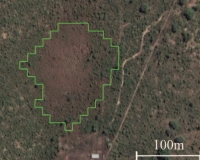A semi-automatic approach for doline mapping in Brazilian covered karst: the way forward to vulnerability assessment
DOI:
https://doi.org/10.3986/ac.v51i1.10011Keywords:
cave-ground connectivity, preservation area, field surveying, remote sensingAbstract
Doline mapping is paramount in the vulnerability and risk assessment of the underground karst environment by identifying cave-ground connectivity points at the surface. However, manual mapping is labour-intensive, slow and subjective, especially on a large scale. Therefore, the present study adopted a GIS-based semi-automatic approach for mapping large and medium-sized depressions/dolines in the Corrente river basin in Brazil, with a particular focus on the environmentally preserved areas of river Vermelho (APANRV Portuguese abbreviation) using remote sensing (DEM and Google Earth imagery) and field-based observations. Seven typical dolines forms (e.g., cockpit with drain insertion, collapse, collapse with river capture, suffosion, solution, cover collapse, and buried) are found from extensive field surveys. As an outcome of the proposed approach, two hundred and thirty-two medium to large-sized dolines have been identified and categorised into three main groups based on the cave density and local geology G1, G2, and G3. The high density of identified dolines (164 known caves) in G1 provides reconnaissance for future speleological works in the preserved areas. Additionally, the presence of a considerable number of dolines in the adjoining areas (G2 and G3) stresses the need to revise the existing boundaries of the APANRV. Results correlate well with the dolines sites marked using field surveys and Google Earth images. This doline mapping may help researchers in the groundwater vulnerability assessment and the protection of speleological heritage preserved in the caves.
Downloads

Downloads
Published
How to Cite
Issue
Section
License

This work is licensed under a Creative Commons Attribution-NonCommercial-NoDerivatives 4.0 International License.
Authors guarantee that the work is their own original creation and does not infringe any statutory or common-law copyright or any proprietary right of any third party. In case of claims by third parties, authors commit their self to defend the interests of the publisher, and shall cover any potential costs.
More in: Submission chapter




